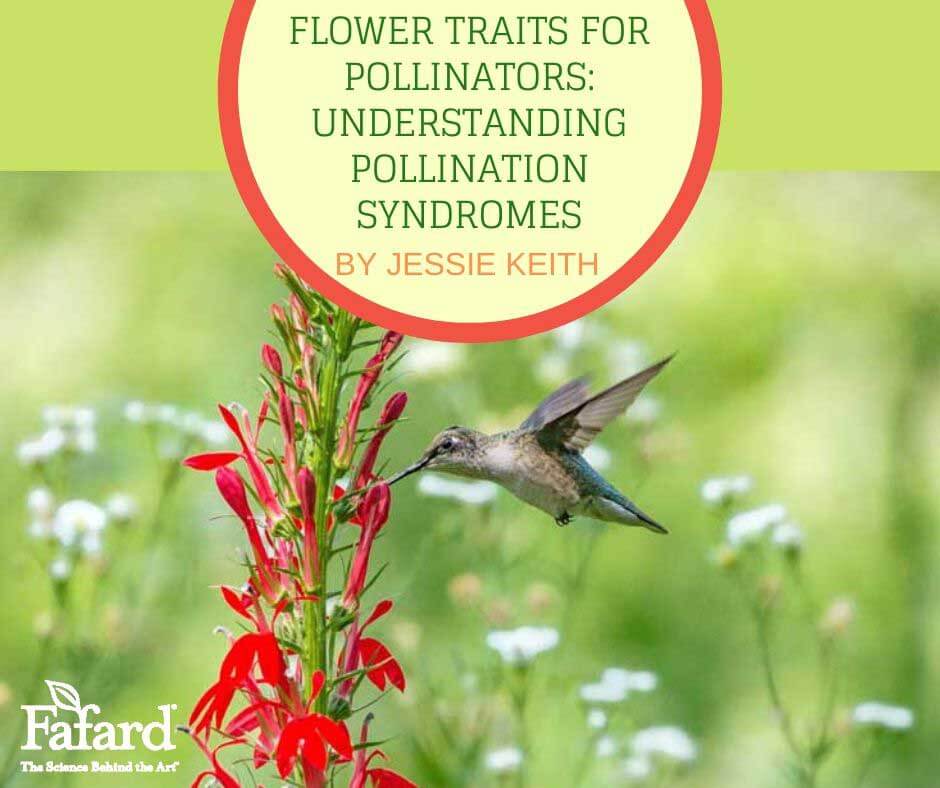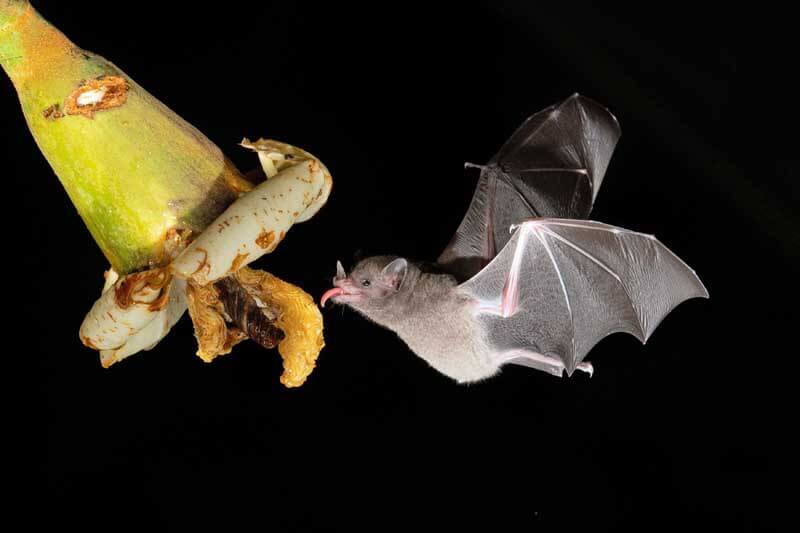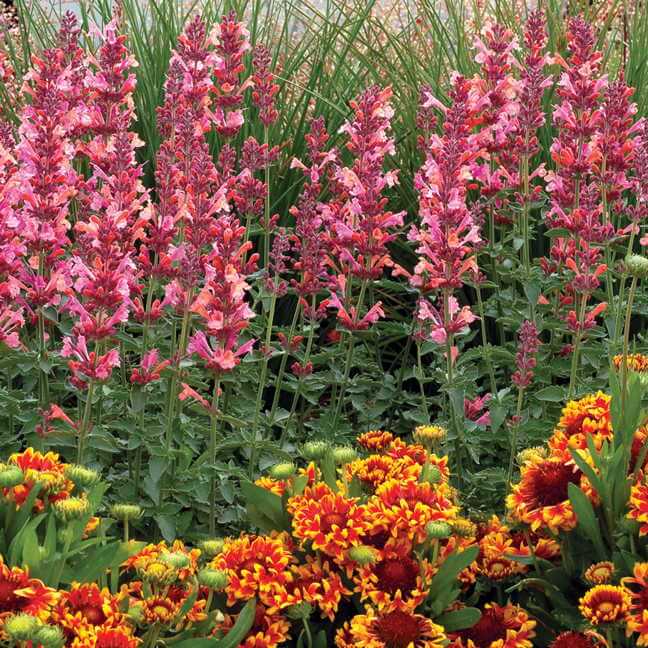
Flowers are pollinator magnets—each holding the secret for pollinator attraction. Flowers communicate to birds, bees, bats, or butterflies through special cues. These cues are essentially groups of traits relating to things like flower size, shape, color, scent, as well as nectar and pollen characteristics. “Pollination syndromes” is another term for these trait groups, and they can be helpful for gardeners, too. If you know them, you can better understand how to design your gardens and containers to draw specific pollinators.
Pollination Syndromes

Showy flowers are displaying their NEED to be pollinated by insects, birds, or other pollinators. Truly, floral displays are about two things: sex and competition. Pollination is required for cross-fertilization (gene exchange to keep plant populations healthy and species surviving). Flowers also offer essential food rewards for pollinators. So as pollinators compete for flowers and flowers compete for pollinators our gardens reap the reward of color and movement. Types of pollinators are many, and some flowers and pollinators are specially designed for one another. One pollinator to one plant species relationships are very rare. More often plants have pollination syndromes directed towards broader pollinator groups, like bee, bird, butterfly, and bat. Once gardeners know these, they can choose flowers with specific pollinators in mind.
Bee Pollination (Melittophily)

There are lots of bees with around 20,000 known distinct species. Nonetheless, specific floral traits attract them all. Bees are attracted to yellow, blue and ultra-violet colors, they eat pollen and sugary nectar, have a strong sense of smell, and they land on the flowers they pollinate. In turn, most bee flowers are either in yellow or blue shades or have nectar guides (petal marks indicating nectar) in these colors or ultra-violet; their nectar is sugary nectar, the flowers are fragrant and they produce lots of pollen. Finally, the flowers are designed for landing, offering bell or bowl shapes like bellflowers (Campanula spp.), heads like sunflowers (Helianthus spp.), or wide tubes like snapdragons (Antirrhinum spp.). Planting for bees has become more and more important as bee populations decline.
Bird Pollination (Ornithophily)
Flowers pollinated by birds are usually red or orange because birds are more sensitive to red and insect pollinators are less sensitive to it. Red and orange also indicate big nectar rewards, another trait of bird-pollinated flowers. Hummingbirds are the most specialized bird pollinators on the planet. Hummingbirds are very sensitive to red, hover while feeding, have long beaks/tongues and must consume lots of nectar to keep their wings flapping at 18 to 200 beats per second. They also have no sense of smell. So hummingbird flowers are odorless, typically red or orange-hued, tubular, nectar-filled and lack landing pads. Trumpet creeper (Campsis radicans), red beebalm (Monarda didyma) and fuchsia (Fuchsia spp.) are all hummingbird-pollinated flowers.
Butterfly Pollination (Psychophily)

There are nearly as many butterflies as bees with around 17,500 different known species. As a group, they have a sense of smell, long curled tongues (proboscis), sharp color vision, and they must perch to feed. So, most butterfly flowers are brightly colored, lack a scent, are shaped for perching and have long, tubular nectaries perfect for a butterfly’s proboscis. Everyone wants to invite butterflies to their garden, and there are lots of garden flowers that attract them. Madagascar periwinkle, Lantana and phlox blooms are just three examples of the many flowers uniquely designed for butterfly pollination.
Moth Pollination (Phalaenophily)

Nighttime pollinators like moths have good night sight and an excellent sense of smell. So, moth-pollinated flowers are always highly fragrant and pale or white. Lots of moths are also hover feeders, so many moth-pollinated flowers are funnel-shaped and large, in addition to being very fragrant at night. Some classic moth flowers include angel’s trumpet (Brugmansia spp.), moonflower (Ipomoea alba) and woodland tobacco (Nicotiana sylvestris). (Click here to learn more about moth gardening.)
Bat Pollination (Chiropterophily)

If you live down South or out West, you can expect to be able to invite a bat or two into your garden, if you choose the right flowers. Most bat pollinators are nocturnal and rely on echolocation, as well as smell, to find food. These fruit and nectar feeders have very high metabolisms, so they are attracted to large lightly colored nocturnal blooms that smell strongly of fermenting fruit and have lots of dilute nectar. The fruity flowers of mangoes, bananas, and guava are all bat pollinated. Many species of cacti have flowers that draw bats as well.
Pollination Generalists
Some flowers are “smart” and appear to have lots of bells and whistles to attract lots of different pollinators. These flowers are generally very successful and buzz with activity when in bloom. Flowers like goldenrod and thistles draw diverse groups of beetles, bees, butterflies and even flies.
Many other pollination syndromes exist, but these are the most common for gardeners. Knowing the basics allows garden planners to plant for the birds, bees, and butterflies to make our gardens and world a better place.
Pollinator Container Plan:

This trio of everblooming, sun-loving flowers look great together—with their warm and cool hues—and will attract lots of pollinators. Begin by choosing an attractive, 5-gallon flower pot and fill it ¾ of the way full with Fafard Ultra Potting Mix with Extended Feed. Then plant together the following:
1. Gaillardia Heat it Up Scarlet (12 to 24 inches, bushy perennial, attracts bees and butterflies)
2. Lantana montevidensis Luscious® Grape (10 to 14 inches, trailing bloomer, attracts butterflies)
3. Agastache ‘Kudos Ambrosia’ (16-22 inches, upright perennial, attracts hummingbirds (seen left))
With good care, this perfect summer pot will look great all season long.
